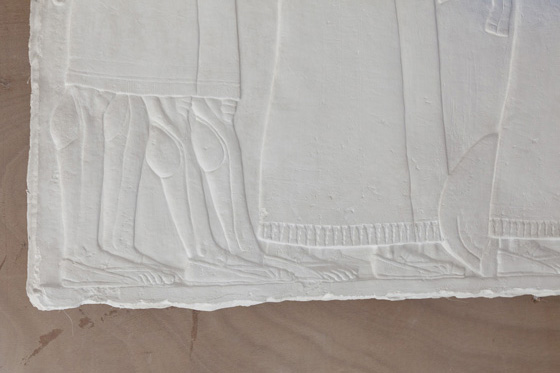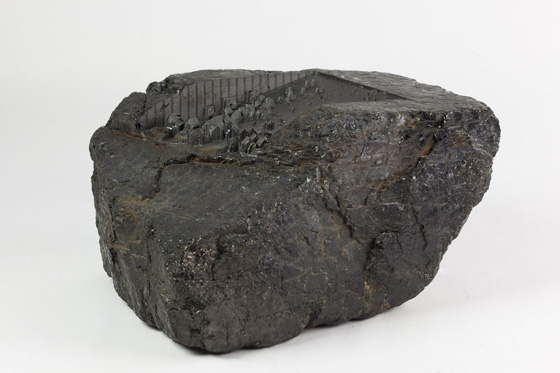The routing machines are computer-operated, namely with DELCAM Artcam Pro, to generate the toolpaths and custom software is used when it comes to reading the toolpaths themselves. The preferred 3D digital files when it comes to routing are 2D-cutting .dxf, or 3D-routing .stl. Careful consideration of the 3D digital files is essential: only ‘clean’ files can be routed without complications, which means that any hidden layers or geometries must be disposed of prior to sending the file to the routing machine. Additionally, Factum Arte has pioneered a novel method to route high-resolution reliefs from 8-bit and 16-bit .tiff files thanks to the data recorded by the Lucida 3D Scanner and the Selene System, capable of recording relief information as tonal data.

Marina Abramović has favoured routed alabaster as her material of choice to embody her innovative thoughts about the ephemeral and the permanent

The routing machine has been used in the production of facsimiles such as the Polittico Griffoni

Detail of the routed surface produced for the reconstruction of the Eastern End of the Throne Room of Ashurnasirpal II

Routed impression of the surface of the Hereford Mappa Mundi






